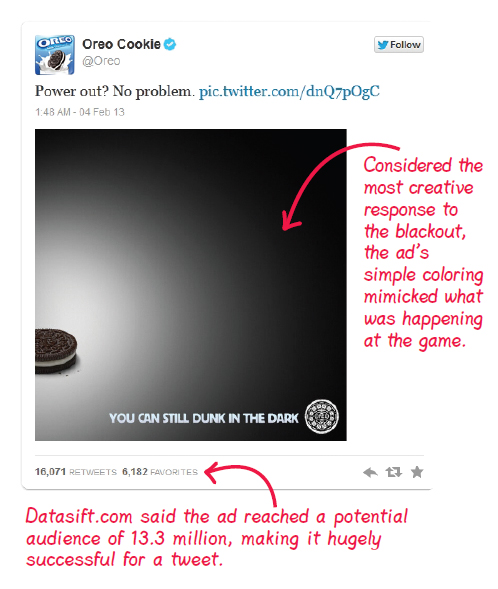Leading Decision Making
Small groups make tons of decisions—everything from who should be in the group to how to achieve its goals. How do members make such decisions? Should the leader decide for everyone? Should there be a vote? Or should the group discuss choices until everyone agrees? Depending on the group’s goals, the leadership style, and the decision being made, it could be any of these options.

It was a simple ad with a big impact. The 2013 NFL Super Bowl came to a screeching halt when the power went out in the New Orleans Superdome. As players, coaches, sportscasters, and fans were left idling for 34 agonizing minutes, the social media team for Oreo went to work. Seizing the opportunity to create a timely and relevant ad, the 15-person group created, approved, and posted an image of an Oreo cookie to Twitter with this simple caption: “Power out? No problem. You can still dunk in the dark” (Watercutter, 2013). The group did all this in about 10 minutes. If you’ve ever seen an episode of Mad Men, you know this is an exceptionally fast turnaround in terms of designing and publishing an ad. The team was able to move so quickly because the designated leaders—in this case, brand managers for Oreo—made fast and firm decisions, enabling the rest of the team to execute the plan immediately. The result was a highly regarded and memorable ad—and proof that a group with clear decision-making processes can achieve great success.
Small groups make a series of decisions at various points in their work together. Everything from deciding when your group should meet to choosing a caption for an ad is subject to decision making—the process of making choices among alternatives. Groups commonly rely on three methods for decision making: decision by authority, decision by majority, and decision by consensus.